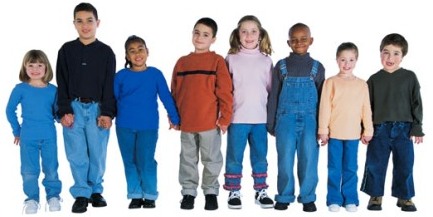Diagnosing ADHD
Diagnosing ADHD
The American Psychiatric Association's Diagnostic and Statistical Manual-IV, Text Revision (DSM-IV-TR) is used by mental health professionals to help diagnose ADHD. This diagnostic standard helps ensure that people are appropriately diagnosed and treated for ADHD. Using the same standard across communities will help determine the prevalence and public health impact of ADHD.

DSM-IV Criteria for ADHD
I. Either A or B:
- Six or more of the following symptoms of inattention have been present for at least 6 months to a point that is inappropriate for developmental level:
Inattention
- Often does not give close attention to details or makes careless mistakes in schoolwork, work, or other activities.
- Often has trouble keeping attention on tasks or play activities.
- Often does not seem to listen when spoken to directly.
- Often does not follow through on instructions and fails to finish schoolwork, chores, or duties in the workplace (not due to oppositional behavior or failure to understand instructions).
- Often has trouble organizing activities.
- Often avoids, dislikes, or doesn't want to do things that take a lot of mental effort for a long period of time (such as schoolwork or homework).
- Often loses things needed for tasks and activities (e.g. toys, school assignments, pencils, books, or tools).
- Is often easily distracted.
- Is often forgetful in daily activities.
- Six or more of the following symptoms of hyperactivity-impulsivity have been present for at least 6 months to an extent that is disruptive and inappropriate for developmental level:
Hyperactivity

- Often fidgets with hands or feet or squirms in seat when sitting still is expected.
- Often gets up from seat when remaining in seat is expected.
- Often excessively runs about or climbs when and where it is not appropriate (adolescents or adults may feel very restless).
- Often has trouble playing or doing leisure activities quietly.
- Is often "on the go" or often acts as if "driven by a motor".
- Often talks excessively.
- Often blurts out answers before questions have been finished.
- Often has trouble waiting one's turn.
- Often interrupts or intrudes on others (e.g., butts into conversations or games).
Impulsivity
II. Some symptoms that cause impairment were present before age 7 years.
III. Some impairment from the symptoms is present in two or more settings (e.g. at school/work and at home).
IV. There must be clear evidence of clinically significant impairment in social, school, or work functioning.
V. The symptoms do not happen only during the course of a Pervasive Developmental Disorder, Schizophrenia, or other Psychotic Disorder. The symptoms are not better accounted for by another mental disorder (e.g. Mood Disorder, Anxiety Disorder, Dissociative Disorder, or a Personality Disorder).
Based on these criteria, three types of ADHD are identified:
IA. ADHD, Combined Type: if both criteria IA and IB are met for the past 6 months
IB. ADHD, Predominantly Inattentive Type: if criterion IA is met but criterion IB is not met for the past six months
IC. ADHD, Predominantly Hyperactive-Impulsive Type: if Criterion IB is met but Criterion IA is not met for the past six months.
American Psychiatric Association: Diagnostic and Statistical Manual of Mental Disorders, Fourth Edition, Text Revision. Washington, DC, American Psychiatric Association, 2000.
- Page last reviewed: February 20, 2009
- Page last updated: February 20, 2009
- Content source: Division of Human Development, National Center on Birth Defects and Developmental Disabilities, Centers for Disease Control and Prevention
Contact Us:
- Centers for Disease Control and Prevention
- National Center on Birth Defects and Developmental Disabilities
- Division of Human Development and Disabilities
- 1600 Clifton Road
- MS E-86
- Atlanta, GA 30333
- 800-CDC-INFO
(800-232-4636)
TTY: (888) 232-6348
24 Hours/Every Day - cdcinfo@cdc.gov

